Start date August 9, 1925 | ||
 | ||
Similar Hindustan Socialist Republican Association , Ashfaqulla Khan , Ram Prasad Bismil | ||
Vande mataram ram prasad bismil and kakori conspiracy pt 1
The Kakori Conspiracy (or Kakori train robbery or Kakori Case) was a train robbery that took place between Kakori and, near Lucknow, on 9 August 1925 during the Indian Independence Movement against the British Indian Government. The robbery was organised by the Hindustan Republican Association (HRA).
Contents
- Vande mataram ram prasad bismil and kakori conspiracy pt 1
- Vande mataram ram prasad bismil and kakori conspiracy pt 2
- Robbery
- Arrests
- Kakori trial
- Courts proceedings
- Final verdict
- Hunger strike in the jail
- Defence committee
- Reaction in the country
- Clemency appeal
- References
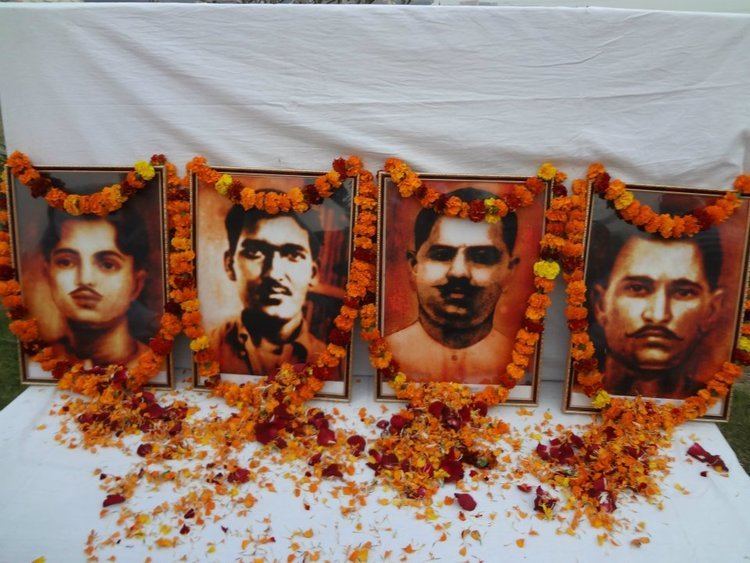
The robbery was conceived by Ram Prasad Bismil and Ashfaqullah Khan who belonged to the HRA, which later became the Hindustan Socialist Republican Association. This organisation was established to carry out revolutionary activities against the British Empire in India with the objective of achieving independence. Since the organisation needed money for purchase of weaponry, Bismil and his party decided to plunder a train on one of the Northern Railway lines. The robbery plan was executed by Ram Prasad Bismil, Ashfaqulla Khan, Rajendra Lahiri, Chandrashekhar Azad, Sachindra Bakshi, Keshab Chakravarty, Manmathnath Gupta, Murari Lal Gupta (fake name of Murari Lal Khanna), Mukundi Lal (Mukundi Lal Gupta) and Banwari Lal. One passenger was killed by an accidental shot.
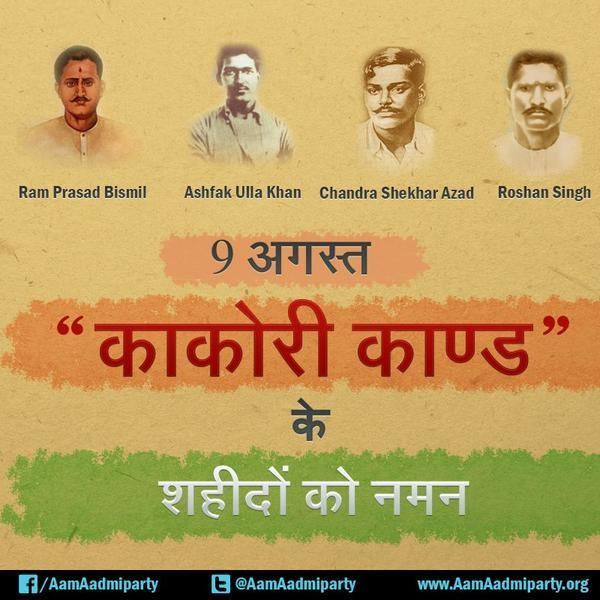
Vande mataram ram prasad bismil and kakori conspiracy pt 2
Robbery
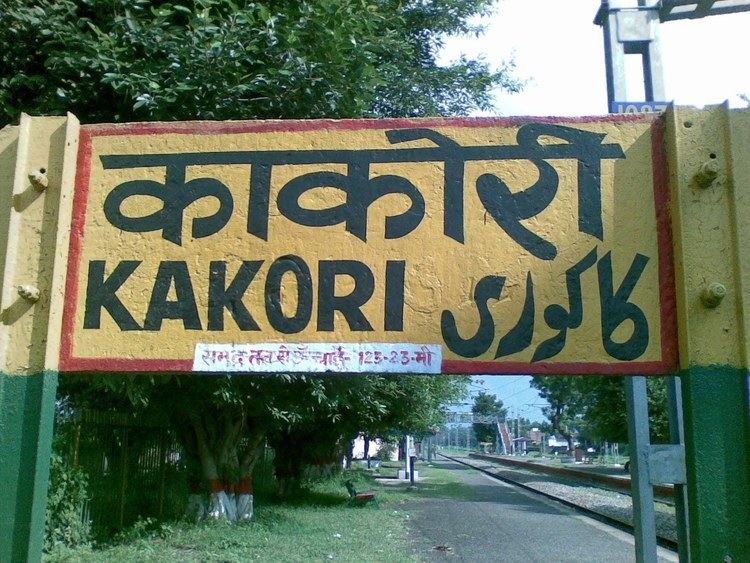
On 9 August 1925, the Number 8 Down Train travelling from Shahjahanpur to Lucknow was approaching the town of Kakori (now in Uttar Pradesh), when one of the revolutionaries pulled the chain to stop the train and overpowered the guard. It is believed that they looted that specific train because train was supposed to carry the money-bags belonging to the British Government Treasury in the guard's cabin. One passenger was killed by an accidental shot, making it a murder case. They looted only these bags containing some 8,000 Rupees and escaped to Lucknow while not a single Indian was looted, because the targets of the mission were:
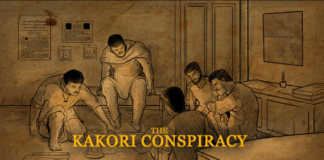
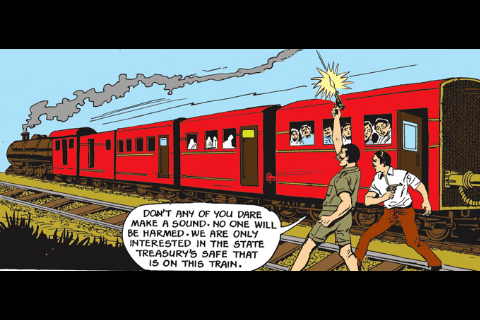
Following the incident, the British administration started an intense manhunt and arrested several of the revolutionaries involved in the HRA. Their leader, Ram Prasad Bismil, was arrested at Saharanpur on 26 September 1925, and his lieutenant, Ashfaqullah Khan, was arrested ten months later at Delhi.
Arrests
Forty people were arrested from all over India. Their names with the places of arrest are:
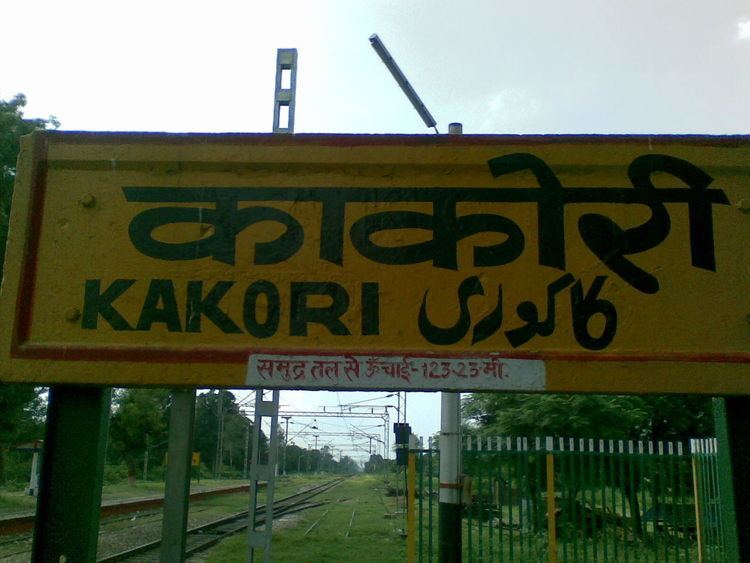
Of the above, Shachindra Nath Sanyal, Rajendra Lahiri and Yogesh Chandra Chatterji had already been arrested in Bengal. Lahiri was prosecuted in a Dakshineshwar bombing case, while Ashfaqullah Khan and Sachindra Bakshi were arrested later when the main Kakori conspiracy case was over. A supplementary case was filed against these two and they were prosecuted in the same manner.
Kakori trial
Ram Prasad Bismil and some others were charged with various offences, including robbery and murder. Fifteen people had been released due to lack of evidence and a further five had absconded. Two of the absconders – Ashfaqullah Khan and Sachindra Bakshi – were captured after the trial, while one of the others, Chandrasekhar Azad, reorganised the HRA in 1928 and shot himself on 27 February 1931 at Chandrasekhar Azad Park, Allahabad.
Charges pressed against a further four men were dropped. Damodar Swarup Seth was discharged due to illness, while Veer Bhadra Tiwari, Jyoti Shankar Dixit and Shiv Charan Lal have been suspected of providing information to the authorities. A further two people – Banarsi Lal and Indu Bhushan Mitra – became approvers: they helped the prosecution, as also did Banwari Lal in return for a lenient sentence of two years imprisonment.
Court's proceedings
Charges against 15 of the accused were withdrawn. The trial against the remaining 28 began on 21 May 1926 in the special session court of A. Hamilton. Abbas Salim Khan, Banwari Lal Bhargava, Gyan Chattarjee and Mohd Ayuf were the assessors of the case. Of the 28, Sachindra Nath Sanyal, Jogesh Chandra Chatterjee and Rajendra Nath Lahiri were transported from where they had been held in Bengal.
The court appointed Jagat Narayan Mulla as public prosecutor knowingly; he had been prejudiced against Ram Prasad Bismil since 1916, when Bismil led the grand procession of Bal Gangadhar Tilak at Lucknow. He had also been the public procecutor in the Mainpuri conspiracy case of 1918.
Final verdict
Following the arrest of Ashfaqullah Khan, the police tried to make him provide evidence against his accomplices but he refused. Another supplementary case was filed against Ashfaqulla Khan and Sachindra Bakshi in the court of Special Sessions Judge J. R. W. Bennett. An appeal was filed in the then Chief Court of Oudh (now in Uttar Pradesh) on 18 July 1927.
The punishments given were as follows:
Hunger strike in the jail
After final judgement of court, the group photograph was taken and all the accused were sent to the different jails of United Province. They were asked to put off their clothes and wear the jail dress like other prisoners. All the accused protested this jail order and started hunger strikes on the first day. Their plea was quite genuine. They argued that since the all have been charged to overturn the British rule and have been punished under section 120(B) and 121(A) hence they should be treated as political prisoners and provided the same facilities in the jails.
The details of their hunger strike are given hereunder:
Defence committee
The legal defence for the arrested revolutionaries was provided by Gobind Ballabh Pant, Mohan Lal Saxena, Chandra Bhanu Gupta, Ajit Prasad Jain, Gopi Nath Srivastava, R. M. Bahadurji and B. K. Chaudhury and Kripa Shankar Hajela. Pandit Jagat Narayan Mulla, a leading advocate from Lucknow and brother in law of Pandit Jawaharlal Nehru refused to take up the defence of the arrested revolutionaries. He was appointed as Public Prosecutor by the law of Court.
Among the political figures who came out in support of those arrested for the Kakori train robbery were: Motilal Nehru, Madan Mohan Malviya, Muhammad Ali Jinnah, Lala Lajpat Rai, Jawaharlal Nehru, Ganesh Shankar Vidyarthi, Shiv Prasad Gupta, Shri Prakash and Acharya Narendra Dev.
Reaction in the country
There were widespread protests against the Court's decision all over the country, and members of the Central Legislature even petitioned the Viceroy of India to commute the death sentences given to the four men to life sentences. Appeals were also sent to the Privy Council and even to Mohandas K. Gandhi himself. However, these requests were turned down and the men were finally executed.
Clemency appeal
On 22 August 1927, the Chief Court endorsed the original judgement with an exception of one or two punishments. A mercy appeal was filed in due course before the Provincial Governor of U.P. by the members of legislative council which was dismissed. Ram Prasad Bismil wrote a letter to Madan Mohan Malviya on 9 September 1927 from Gorakhpur Jail. Malviya sent a memorandum to the then Viceroy and Governor General of India Edward Fredrick Lindley Wood with the signatures of 78 Members of Central Legislature, which was also turned down.
On 16 September 1927, the final mercy appeal was forwarded to Privy Council at London and to the King Emperor through a famous lawyer of England S.L. Polak but the British Government, who had already decided to hang them, sent their final decision to the India office of Viceroy that all the four condemned prisoners were to be hanged till death by 19 December 1927 positively.
